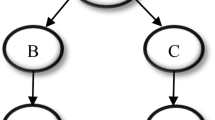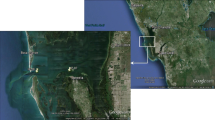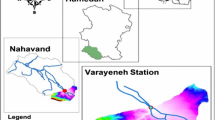Abstract
Determining the quantity of sewage sludge is a major component of designing sludge treatment units and their handling and disposal facilities including its fluctuation over a wide range. In the present study, the capabilities of the hybrid wavelet-gene expression programming (WGEP), wavelet-model tree (WMT), and wavelet-evolutionary polynomial regression (WEPR) models have been investigated to predict the quantity of daily sewage sludge. In the first step, the single gene expression programming (GEP), model tree (MT), and evolutionary polynomial regression (EPR) models were employed to predict the amounts of sewage sludge based on the input vector content produced by the sewage sludge data series, which ranged from lagged-1 day to lagged-4 days. In this study, the WGEP, WMT, and WEPR models were obtained through the combination of two methods: discrete wavelet transforms (DWT) and simple GEP, MT, and EPR models. Incidentally, the models were implemented by transforming the input datasets using the Meyer wavelet function in order to reveal the temporal and spectral information contained within the data, and subsequently, this transformed data was used as the input vectors for the simple GEP, MT, and EPR models. In addition, the results of the wavelet conjunction model were compared with those obtained using the simple GEP, MT, and EPR models. The study indicated that the performance of the wavelet coupled-models was better than the simple models. The quantitative comparisons demonstrated that the WMT, with root mean square error (RMSE) of 8.15 and R = 0.98, performed better than the WGEP (RMSE = 15.26 and R = 0.92) and WEPR (RMSE = 18.20 and R = 0.89) models. Overall, the use of wavelet conjunction models provided an acceptable performance in order to improve precision in one of the most effective parameters involved in the design of a wastewater treatment plant (WWTP).







Similar content being viewed by others
References
Abdul Ghani NA, Shahin MA, Nikraz HR (2012) Use of evolutionary polynomial regression (EPR) for prediction of total sediment load of Malaysian rivers. Int J Eng 6(5):262–277
Azamathulla HM (2012) Gene expression programming for prediction of scour depth downstream of sills. J Hydrol 460–461:156–159
Belanche LA, Valdés JJ, Comas J, Roda IR, Poch M (1999) Towards a model of input–output behaviour of wastewater treatment plants using soft computing techniques. Environ Model Softw 14(5):409–419
Berardi, L., Laucelli, D., Giustolisi, O., Savić, D.A., (2014). Detecting pipe bursts in water distribution networks using EPR modeling paradigm. In: 11th international conference on hydroinformatics, New York City, USA
Buonocore E, Mellino S, Angelis GD, Liu G (2016) Life cycle assessment indicators of urban wastewater and sewage sludge treatment. Ecol Indic. https://doi.org/10.1016/j.ecolind.2016.04.047
Catalăo JPS, Pousinho HMI (2011) Mendes, V.M.F., short-term wind power forecasting in Portugal by neural networks and wavelet transform. Renew Energy 36(4):1245–1251
Danish M, Jing H, Pin Z, Ziyang L, Pansheng Q (2016) A new drying kinetic model for sewage sludge drying in presence of CaO and NaClO. Appl Therm Eng 106:141–152
Doglioni A, Fiorillo F, Guadagno F, Simeone V (2011) Evolutionary polynomial regression to alert rainfall-triggered landslide reactivation. Landslides 9(1):53–62
Ebtehaj I, Bonakdari H, Shamshirband S, Mohammadi K (2015a) A combined support vector machine-wavelet transform model for prediction of sediment transport in sewer. Flow Meas Instrum 47:19–27
Ebtehaj I, Bonakdari H, Zaji AM, Azimi H, Sharifi A (2015b) Gene expression programming to predict the discharge coefficient in rectangular side weirs. Appl Soft Comput 35:618–628
Ferreira C (2001) Gene expression programming: a new adaptive algorithm for solving problems. Complex Syst 13(2):87–129
Forster C (2003) Wastewater treatment and technology. Thomas Telford, London
Franus M, Barnat-Hunek D, Wdowin M (2016) Utilization of sewage sludge in the manufacture of lightweight aggregate. Environ Monit Assess 188(10):10
Gandomi AM, Karim Babanajad S, Alavi AM, Farnam Y (2012) Novel approach to strength modeling of concrete under triaxial compression. J Mater Civil Eng 24(9):1132–1143
Gontarski CA, Rodrigues PR, Mori M, Prenem LF (2000) Simulation of an industrial wastewater treatment plant using artificial neural networks. Comput Chem Eng 24:1719–1723
Giustolisi O, Savic DA, Laucelli D (2004) Data mining for management and rehabilitation of water systems: the evolutionary polynomial regression approach. Dresden Annu Conf Hydraul Eng:285–296
Giustolisi O, Savic DA (2006) A symbolic data-driven technique based on evolutionary polynomial regression. J Hydroinf 8(3):207–222
Giustolisi O, Savic DA (2009) Advances in data-driven analyses and modelling using EPRMOGA. J Hydroinf 11(3–4):225–236
Grossmann A, Morlet J (1984) Decomposition of hardy functions into square integrable wavelets of constant shape. SIAM J Math Anal 15:723–736. https://doi.org/10.1137/0515056
Guo, H., Jeong, K., Lim, J., Jo, J., Kim, Y.M., J., Park, J., Kim, J.H., Cho, K.H., (2015). Prediction of effluent concentration in a wastewater treatment plant using machine learning models J Environ Sci, 32, 90–101
Hanbay D, Turkoglu I, Demir Y (2008) Prediction of wastewater treatment plant performance based on wavelet packet decomposition and neural networks. Expert Syst Appl 34(2):1038–1043
Hu J, Wang J (2015) Short-term wind speed prediction using empirical wavelet transform and gaussian process regression. Energy 93(2):1456–1466
Karia GL, Christian RA (2009) Wastewater treatment, concepts and design approach. PHI Learning, New Delhi
Kasiviswanathan KS, He J, He KP, Tay J-H (2016) Potential application of wavelet neural network ensemble to forecast streamflow for flood management. J Hydrol 536:161–173
Kisi O (2010) Wavelet regression model for short-term streamflow forecasting. J Hydrol 384(3–4):344–353
Kisi O, Shiri J (2011) Precipitation forecasting using wavelet-genetic programming and wavelet-neuro-fuzzy conjunction models. Water Resour Manag 25(13):3135–3152
Kisi O, Akbari N, Sanatipour M, Hashemi A, Teimourzadeh K, Shiri J (2013) Modeling of dissolved oxygen in river water using artificial intelligence techniques. J Environ Inform 22(2):92–101
Kisi O, Kilic Y (2015) An investigation on generalization ability of artificial neural networks and M5 model tree in modeling reference evapotranspiration. Theor Appl Climatol 126(3):413–425
Laucelli D, Romano M, Savic´ D, Giustolisi A (2016) Detecting anomalies in water distribution networks using EPR modelling paradigm. J Hydroinform 18(3):409–427
Li S, Li Y, Lu Q, Zhu J, Yao Y, Bao S (2014) Integrated drying and incineration of wet sewage sludge in combined bubbling and circulating fluidized bed units. Waste Manag 34(12):2561–2566
Mallat SG (1989) A theory for multiresolution signal decomposition: the wavelet representation. IEEE Trans Pattern Anal Mach Intell 11(7):674–693
Mauricio-Iglesias M, Montero-Castro I, Mollerup AL, Sin G (2015) A generic methodology for the optimisation of sewer systems using stochastic programming and self-optimizing control. J Environ Manag 155:193–203
Metcalf & Eddy, Inc., Tchobanoglous, G., (1978). Wastewater engineering treatment disposal reuse. McGraw-Hill, 2nd edition
Mirabi M, Mianabadi H, Zarghami M, Sharifi MB, Mostert E (2014) Risk-based evaluation of wastewater treatment projects: a case study in Niasar city, Iran. Resour Conserv Recycl 93:168–177
Misiti, M, Misiti Y, Oppenheim G, Poggi J-M., (2004) Matlab wavelet toolbox user’s guide. 3
Mehdizadeh S, Behmanesh J, Khalili K (2017) Application of gene expression programming to predict daily dew point temperature. Appl Therm Eng 112:1097–1107
Mjalli FS, Al-Asheh S, Alfadala HE (2007) Use of artificial neural network black-box modeling for the prediction of wastewater treatment plants performance. J Environ Manag 83:329–388
Moral H, Aksoy A, Gokcay CF (2008) Modeling of the activated sludge process by using artificial neural networks with automated architecture screening. Comput Chem Eng 32:2471–2478
Marti P, Shiri J, Duran-Ros M, Arbat G, Cartagena FR, Puig-Bargues J (2013) Artificial neural networks vs. gene expressions programming for estimating outlet dissolved oxygen in micro irrigation sand filters fed with effluents. Comput Electron Agric 99:176–185
Nasr MS, Moustafa MAE, Kobrosy GE (2012) Application of artificial neural network (ANN) for the prediction of EL-AGAMY wastewater treatment plant performance-EGYPT. J Alex Eng 51:37–43
Nayak PC, Venkatesh B, Krishna B, Jain SK (2013) Rainfall-runoff modeling using conceptual, data driven, and wavelet based computing approach. J Hydrol 493:57–67
Najafzadeh M, Rezaie-Balf M, Rashedi E (2016) Prediction of maximum scour depth around piers with debris accumulation using EPR, MT, and GEP models. J Hydroinf 18(5):867–884
Najafzadeh M, Laucelli DB, Zahiri A (2017) Application of model tree and evolutionary polynomial regression for evaluation of sediment transport in pipes. Korean J Civ Eng 21(115):1–8
Nalarajan NA, Mohandas C (2015) Groundwater level prediction using M5 model trees. J Inst Eng 96(1):57–62.1
Pai TY, Yang PY, Wang SC, Lo MH, Chiang CF, Kuo JL, Chu HH, Su HC, Yu LF, Hu HC, Chang YH (2011) Predicting effluent from the wastewater treatment plant of industrial park based on fuzzy network and influent quality. Appl Math Model 35:3674–3684
Pal M, Deswal S (2009) M5 model tree based modelling of reference evapotranspiration. Hydrol Process 23(10):1437–1443
Quinlan, J. R. (1992) Learning with continuous classes. Adams, A., Sterling, l. (eds) Proceedings of AI’92. World Scientific, 343–348
Seo Y, Kim S, Kisi O, Singh VP (2014) Daily water level forecasting using wavelet decomposition and artificial intelligence techniques. J Hydrol 520:224–243
Shoaib M, Shamseldin AY, Melville BW (2014) Comparative study of different wavelet based neural network models for rainfall–runoff modeling. J Hydrol 515:47–58
Shoaib M, Shamseldin AY, Melville BW, Khan MM (2015) Runoff forecasting using hybrid wavelet gene expression programming (WGEP) approach. J Hydrol 527:326–344
Singh G, Sachdeva SN, Pal M (2016) M5 model tree based predictive modeling of road accidents on non-urban sections of highways in India. Accid Anal Prev 96:108–117
Tahmasebipoor A, Barari A, Behnia M, Najafi T (2015) Determination of the ultimate limit states of shallow foundations using gene expression programming (GEP) approach. Soils Found 55(3):650–659
Author information
Authors and Affiliations
Corresponding author
Additional information
Responsible editor: Marcus Schulz
Rights and permissions
About this article
Cite this article
Najafzadeh, M., Zeinolabedini, M. Derivation of optimal equations for prediction of sewage sludge quantity using wavelet conjunction models: an environmental assessment. Environ Sci Pollut Res 25, 22931–22943 (2018). https://doi.org/10.1007/s11356-018-1975-5
Received:
Accepted:
Published:
Issue Date:
DOI: https://doi.org/10.1007/s11356-018-1975-5




